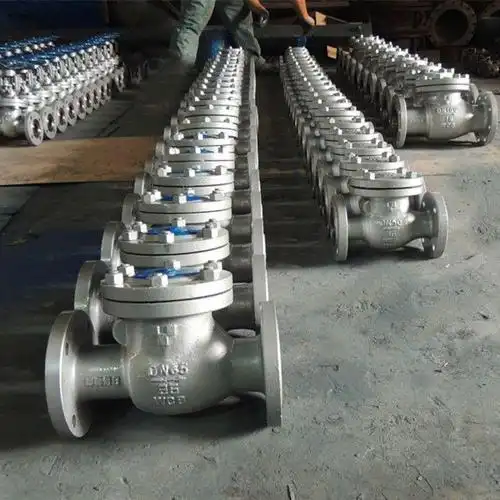|
Marine Valves: Essential Components in Maritime EngineeringMarine valves are vital mechanical components used throughout the maritime industry to control the flow, pressure, and direction of various fluids—including seawater, fuel oil, steam, and hydraulic fluids—within a ship’s complex piping systems. These valves ensure the safe, efficient, and reliable operation of vessels by managing critical functions such as propulsion, ballast control, fire suppression, refrigeration, and auxiliary operations. Given the harsh marine environment characterized by saltwater corrosion, vibration, and fluctuating temperatures, marine valves must be robustly designed and constructed from durable materials. Types of Marine Valves Marine valves come in a variety of types, each serving a specific function based on system requirements: Gate Valves Used primarily for on/off control with minimal flow resistance when fully open. Commonly found in pipelines carrying fuel or ballast water. Globe Valves Designed for precise flow regulation and throttling, often used in high-pressure systems like steam lines and cooling circuits. Ball Valves Quarter-turn valves that offer quick shut-off capabilities and excellent sealing performance. Widely used in fuel systems and seawater lines. Check Valves Prevent backflow in pipelines, ensuring unidirectional fluid movement. Crucial in pump discharge lines and fire-fighting systems. Butterfly Valves Compact and lightweight, these valves are ideal for large-diameter pipelines in HVAC, ballast, and ventilation systems. Safety and Relief Valves
Protect equipment from overpressure by releasing excess fluid or gas automatically when set limits are exceeded. Stop Valves Used to isolate sections of a system during maintenance or emergencies, commonly found in steam and compressed air lines. Specialized Valves Seacock Valves: Control seawater intake and discharge through hull fittings. Deck Drain Valves: Allow rapid drainage of rain or seawater from decks. Refrigeration Valves: Regulate refrigerant flow in cold storage and food preservation systems. Cargo Oil Valves: Manage crude oil transfer in tankers, often featuring double-check mechanisms for safety. Materials and Design Considerations Marine valves must withstand extreme conditions, including exposure to saltwater, chemical corrosion, and mechanical stress. The selection of materials is crucial to ensure long-term reliability and performance: Stainless Steel (e.g., 316L): Resists corrosion and performs well under high temperatures. Bronze and Brass: Preferred for low-pressure seawater applications due to their anti-corrosive properties. Cast Iron and Ductile Iron: Economical options for non-critical, low-stress environments. Duplex Stainless Steel: Offers enhanced strength and corrosion resistance in aggressive environments. Nickel Alloys: Used in high-salinity or chemically active settings, such as LNG carriers. Modern design considerations include: Anti-vortex inlet designs to reduce turbulence. Erosion-resistant coatings for internal surfaces. Leak-proof sealing technologies, such as PTFE seats and metal-to-metal seals. Corrosion protection through epoxy coatings or cathodic protection systems. Applications Across Ship Systems Marine valves are integral to numerous onboard systems: Propulsion Systems Regulate the flow of fuel, lubricants, and cooling water to engines and turbines. Ballast Water Management Systems Control ballast water intake and discharge to maintain vessel stability and comply with international environmental regulations. Fire Protection Systems Ensure rapid delivery of water or foam suppressants via hydrants, sprinklers, and deluge systems. HVAC and Ventilation Systems Butterfly and globe valves manage airflow and temperature regulation in living and working areas. Hydraulic and Pneumatic Systems Direct pressurized fluids to operate steering gear, winches, cranes, and other deck machinery. Refrigeration and Cold Storage Systems Include solenoid valves, expansion valves, and pressure regulators to manage refrigerant flow in cargo holds. Boiler and Steam Systems Safety valves and stop valves protect against overpressure and allow system isolation during maintenance. Smart Marine Valves: The Future of Maritime Technology With the rise of digitalization and automation in the shipping industry, smart valves are becoming increasingly prevalent. These advanced valves integrate sensors, actuators, and communication modules to enable real-time monitoring and remote control. Key Features of Smart Marine Valves: Integrated Sensors: Monitor pressure, temperature, flow rate, and valve position in real time. Wireless Communication: Use protocols such as ZigBee, LoRaWAN, or NB-IoT for data transmission. Remote Monitoring and Control: Enable operators to adjust valve settings from shore-based control centers. Predictive Maintenance: Analyze sensor data to detect wear, leaks, or anomalies before failures occur. Energy Efficiency: Optimize flow patterns and reduce energy consumption using AI-driven algorithms. For example, smart ball valves equipped with condition-monitoring systems can provide early warnings of potential issues, significantly reducing downtime and maintenance costs. Future Trends in Marine Valve Technology The future of marine valve technology is being shaped by innovation and sustainability: Digital Twin Technology: Creating virtual replicas of physical valves to simulate performance and optimize maintenance schedules. Artificial Intelligence: AI-powered predictive analytics for smarter control and diagnostics. Blockchain Integration: Secure logging of maintenance records and operational data to enhance transparency and compliance. Green Technologies: Development of solar-powered or hybrid actuation systems to support decarbonization goals. Conclusion Marine valves are essential components that ensure the smooth and safe operation of ships across all sectors of the maritime industry. From traditional gate and globe valves to intelligent, IoT-enabled systems, their evolution reflects ongoing advancements in engineering, materials science, and digital technology. As global shipping faces increasing demands for efficiency, safety, and environmental responsibility, marine valves will continue to play a central role in meeting these challenges head-on. Whether in cargo ships, offshore platforms, or luxury yachts, marine valves remain the unsung heroes of modern seafaring. |

